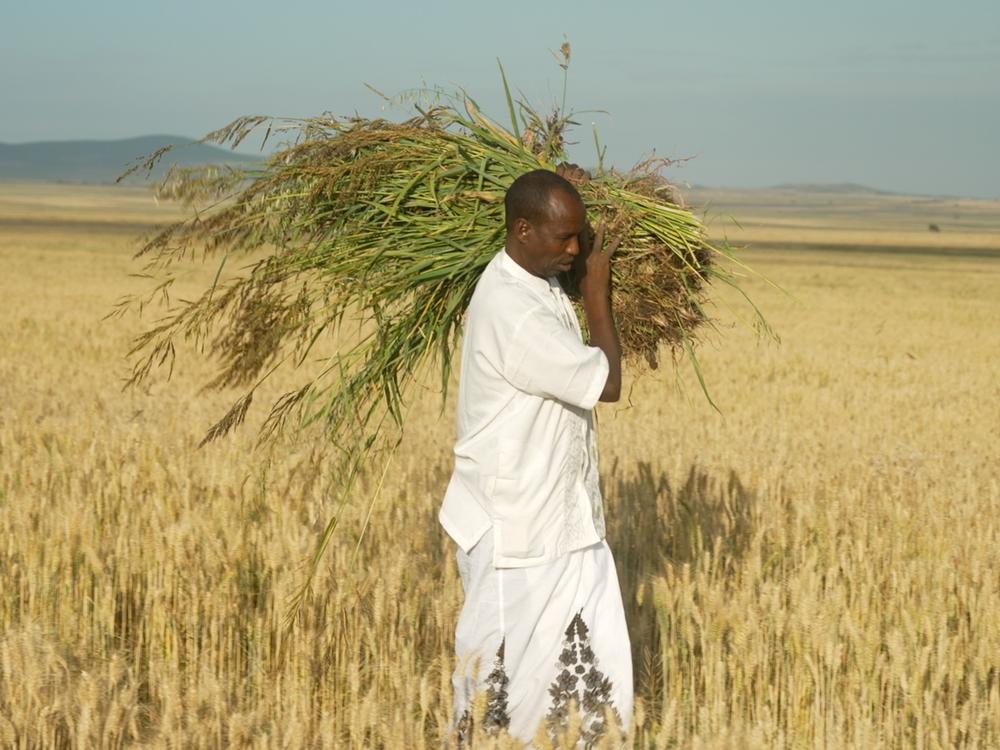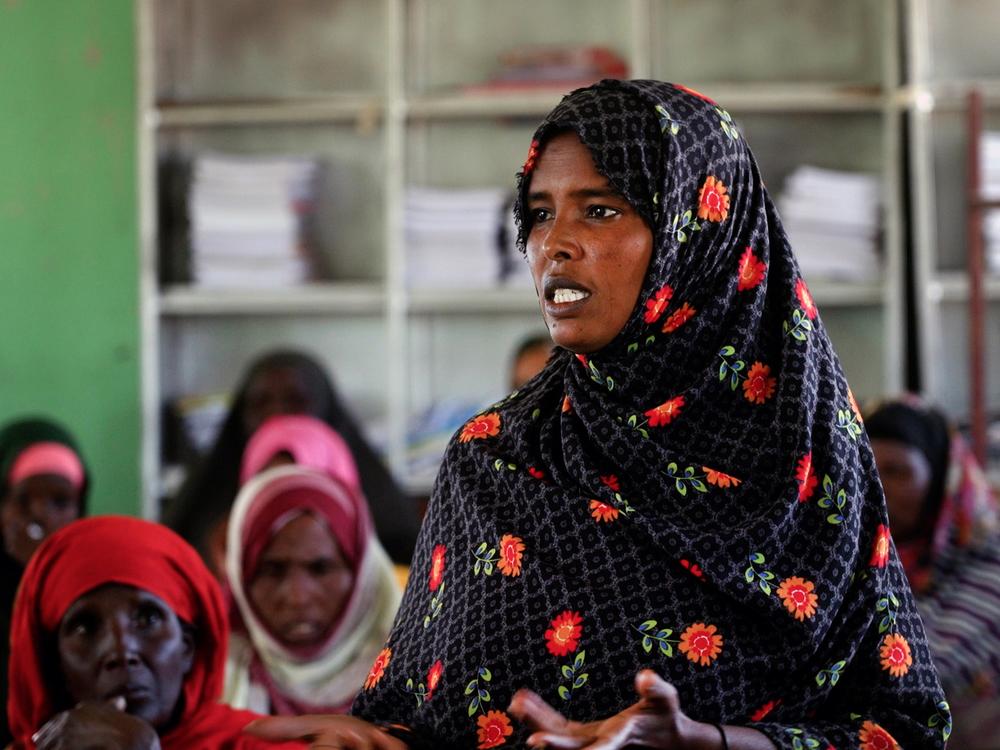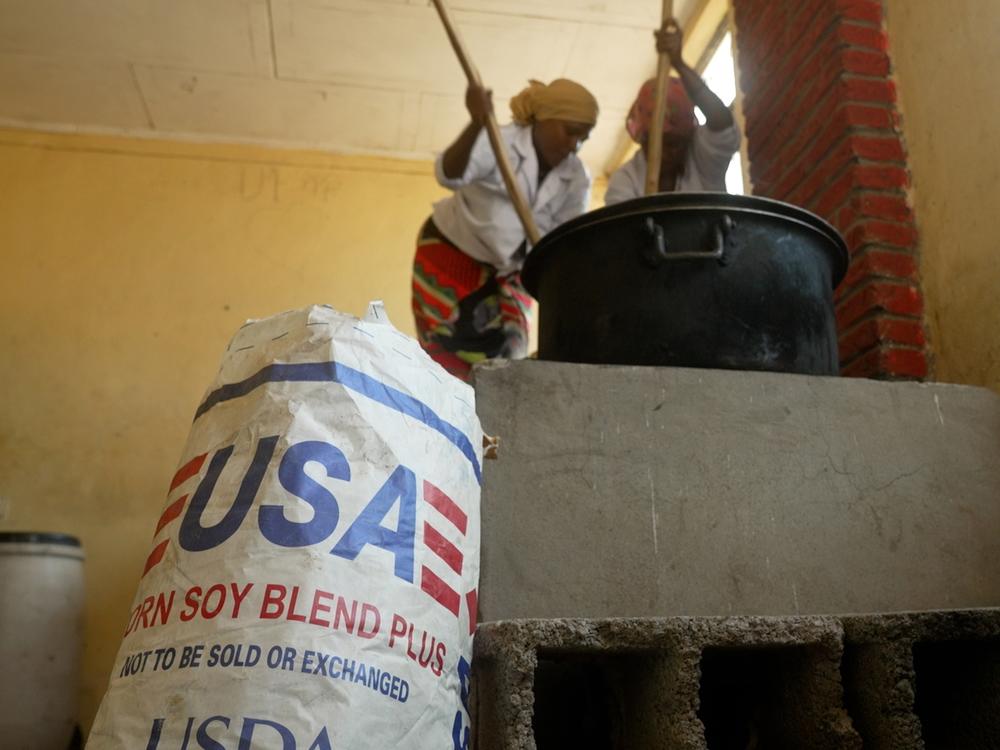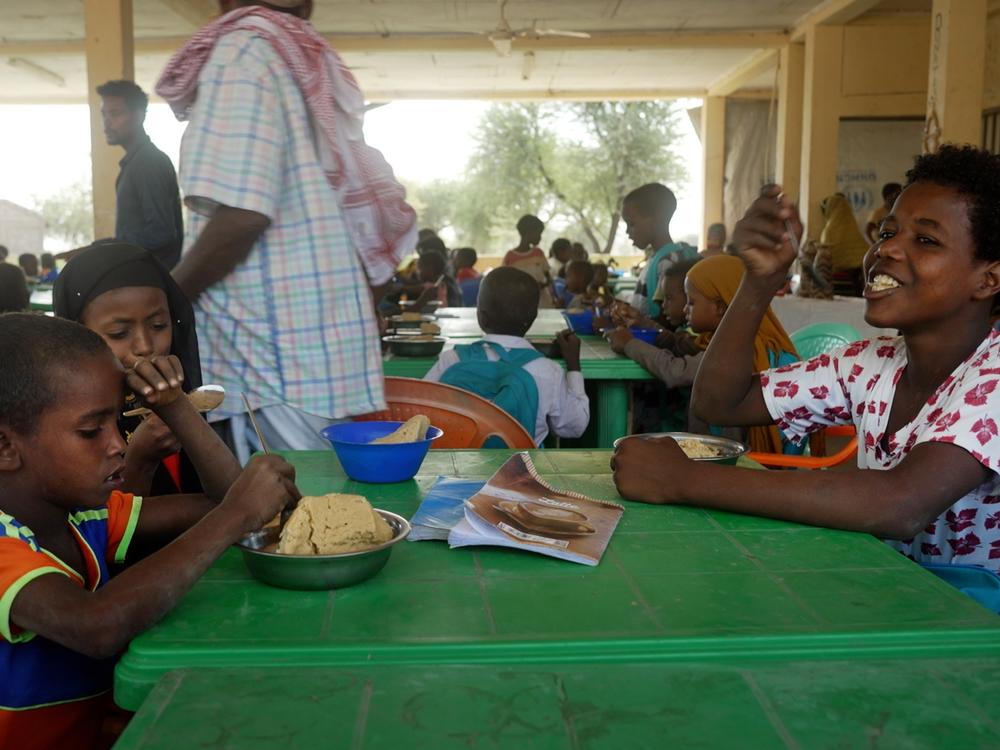Section Branding
Header Content
What is 'food resilience'? Ask these Ethiopian farmers facing conflict and drought
Primary Content
As the shadows lengthen over the village of Tuli Guleed in the Somali region of southern Ethiopia, Halemu Hassan Ali and her husband, Elias Abdi Abdullahi, move methodically through row after row of knee-high wheat. Pulling up weeds that encroach on their precious crop is physically demanding. Both of them hunch low but move swiftly, their easy chatter belies the seriousness of this task.
For in Ethiopia, a country repeatedly wracked by hunger — where more than 20 million citizens rely on some form of food assistance — crop yields for the couple's family are more than a matter of mere metrics. They could ultimately mean the difference between life and death. Bolstering their homegrown food supply could both wean them from costly food assistance and strengthen their long-term economic well-being.
For the past five years, the Somali region has endured a devastating series of droughts that have damaged crops and destroyed vast herds of livestock, a consequence of climate change that has been catastrophic for the handful of nations in the Horn of Africa. Added to that, almost a decade of violence among ethnic groups close to their village forced Halimu, Elias, their young children and most of their community to abandon their farms and fields and fend for themselves elsewhere.
Today, the United Nations reports there are about 4.5 million internally displaced Ethiopians across the country’s nine national regions, with more than a million of them in the Somali region alone. “For the last nine years, we have been moving from one place to another, escaping the violence,” says Halemu, sitting in her home’s dirt courtyard as night begins to fall. “We could only farm our land in the last two years, when we finally settled down.”
Tuli Guleed is a cluster of several hundred homes nestled in a wide shallow valley several hours from the nearest large city, and many farmers there are keen to wring as much sustenance from their small patch of land as possible. To do so, Halemu and Elias are focusing on improving their production with wheat alone, rather than the sorghum, maize and other crops they used to grow.
This is not only to guarantee that they can provide enough food for their family to survive until the next harvest but also — they hope — to have a little extra to sell in a nearby market town. The cash would help rebuild a small measure of household wealth they lost in the past few years and provide a cushion against possible future drought or violence.
Several days later, the pair took a break from their fields to participate in an internationally funded program held at the local school. Ethiopian agricultural experts spend several hours seeding best practices around drought-resilient crops, planting techniques, marketing tips and the use of basic pesticides that are now accessible at a discount from a small village store a short walk from Halemu’s fields.
Strengthening 'food resilience'
U.N. agencies and international nonprofits have spearheaded this kind of effort to protect against future food supply challenges — like drought or conflict — and strengthen what experts call “food resilience.”
“It is part of increasing production and productivity, part of increasing their income and also food security,” says Sinshaw Alemu, a policy officer at the U.N.’s World Food Programme who has worked with residents of Tuli Guleed and dozens of other villages. “Trying to introduce technologies that enhance resilience and trying to build some of the key infrastructures in terms of market access so that incomes are diversified and these families have money in case the worst happens.”
But he acknowledges that despite nationwide efforts to address these challenges, Ethiopia remains food insecure, with food production still a massive challenge. The United Nations Food and Agriculture Organization in a recent report said that a “cascade of recurring shocks” means more than 21 million people in Ethiopia will require humanitarian help this year, including 13 million in need of agricultural assistance.
School meals for ages 5 to 25
Elsewhere, other programs seek to encourage a better educated workforce by helping feed children in schools where meals at home may be few and far between.
In the village of Anderkelo, in the northern Afar region, a U.S.-funded dining space is abuzz with hundreds of students lining up for lunch after several hours of classes. Hundreds of pounds of corn, soy, rice and oil line a small pantry room, measured out by local aid groups but financed by the United Nations to last many months at a time.
A small team of cooks in the kitchen next door stir steaming cauldrons of porridge that’s generously spooned into plastic bowls, starting with the youngest grades first. The fact that this meal is served to students ranging in age from 5 to 25 — some here graduate very late from middle school after years of displacement or help on their families’ farms — has helped raise enrollment, according to the headmaster, Abdu Awoke Mohammed, who volunteered to work in this highly deprived region. “As this community is largely pastoralist, they move from place to place in search of food,” he says. “Since the school meals started, we have seen them settle down and [children] come to school regularly.”
Anderkelo primary and middle school — a collection of interconnected concrete classrooms, a large dirt playground and a smattering of trees — is one of more than 400 educational establishments across the Afar region that host similar programs, benefitting around 90,000 children.
As the lunch rush dies down and children run off to enjoy recess, Mohammed reflects on the long-term impact he hopes such support will bring. “It will reduce the number of hungry individuals in our nation,” he tells me in the rapidly emptying dining space, which has a roof with no walls. “Our country’s young people will learn more efficiently and will eventually contribute significantly to the creation of an educated population.”
Among those to enjoy lunch that day were five siblings — Hayat, Ali, Abdu, Zahara and Mohammed — for whom it was likely their only meal that day. Their father, Johar Hate Ali, has three more children not in full-time education who stay with him in their tiny twig shack across the road from the school gates. His wife died recently, he has just a handful of goats following a multi-year conflict nearby and food prices have risen precipitously.
The school meals have helped him stave off disaster.
“There was no food shortage before,” he says. “The prices were low compared with the current market prices. Now the price is skyrocketing, and we’re facing a serious food shortage.”
Families like his are barely surviving. That level of helplessness is something Halemu and Elias far to the south are desperate to avoid. “We’re committed to working hard,” says Halemu, “and enjoying the fruits of our hard work. Despite challenges — like back pain and working while pregnant — I persist in my hard work.”
It’s a powerful desire that drives this laser-like focus on a wheat crop’s success to maintain their food security, ensure their family’s survival and to offer — one day, perhaps — future financial stability.
“It's motivated,” she concludes, “by my commitment to provide for my children.”
Willem Marx is a London-based journalist.




